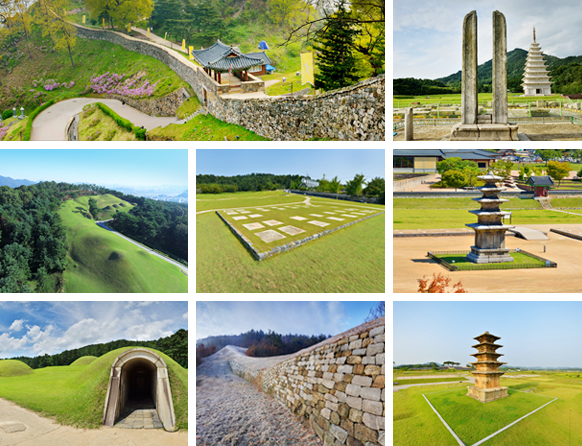World Heritage
World Heritage- Republic of Korea
-
Baekje Historic Areas

Outstanding Universal Value
Brief synthesis
Located in the mountainous mid-western region of the Republic of Korea, the remains of three capital cities collectively represent the later period of the Baekje Kingdom as it reached its peak in terms of cultural development involving frequent communication with neighbouring regions. The Baekje lasted 700 years from 18 BCE to 660 CE and was one of the three earliest kingdoms on the Korean peninsula. The Baekje Historic Areas serial property comprises eight archaeological sites dating from 475-660 CE including the Gongsanseong fortress and royal tombs at Songsan-ri related to the Ungjin capital Gongju; the Archaeological Site in Gwanbuk-ri and Busosanseong Fortress, Jeongnimsa Temple Site, royal tombs in Neungsan-ri and Naseong city wall related to the Sabi capital Buyeo; the Archaeological Site in Wanggung-ri and the Mireuksa Temple Site in Iksan related to the secondary Sabi capital. Together these sites testify to the adoption by the Baekje of Chinese principles of city planning, construction technology, arts and religion; their refinement by the Baekje and subsequent distribution to Japan and East Asia.
Criterion (ii): The archaeological sites and architecture of the Baekje Historic Areas exhibit the interchange between the ancient East Asian kingdoms in Korea, China and Japan in the development of construction techniques and the spread of Buddhism.
Criterion (iii): The setting of the capital cities, Buddhist temples and tombs, architectural features and stone pagodas of the Baekje Historic Areas contribute in forming exceptional testimony to the unique culture, religion and artistry of the kingdom of Baekje.
Integrity
The property components together contain all the elements necessary to embody the values of the property as a whole. The component parts are of sufficient scale to present the historic function of the capital cities and their relationship to their settings. Apart from the pumping station in the vicinity of the northern gate of Busosanseong Fortress and the remaining residential accommodation within the Archaeological Site of Gwanbuk-ri, the sites have not been impacted adversely by development or neglect.
Authenticity
Most elements of the eight component parts of the serial property have suffered human intervention including reparation and restoration to different degrees. Materials and techniques used have largely been traditional. The forms of tombs and temples have been retained. The temple sites are now to some extent islands amongst low scale urban development but the settings of the fortresses and tombs largely retain their forested setting in a mountain landscape.



 >
>